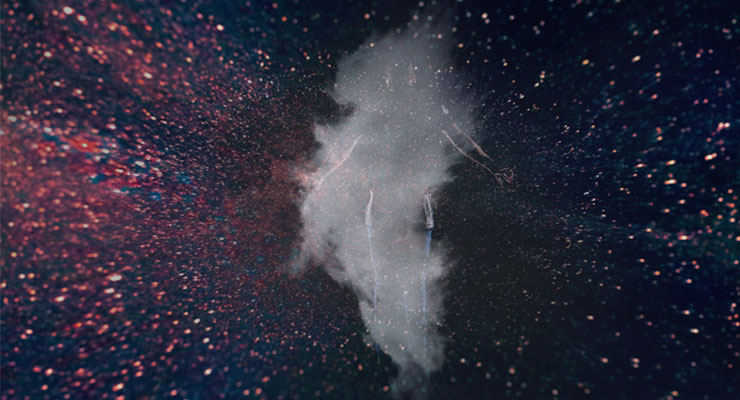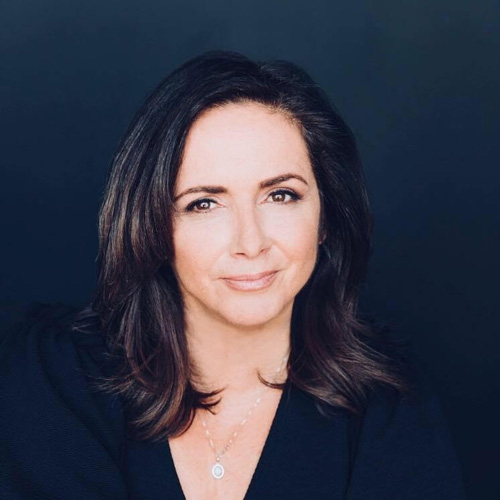
A conversation with Christina Rasmussen about accessing non-local consciousness where we can reconnect with out “lost” loved ones and gain higher insight.
—
Several years ago, my paternal grandmother passed. It was a difficult time for me and my aunt, with whom I was very close, who had just lost her mother. We were both in grief, so we spoke on the phone several times a week in an effort to console each other. During one of the conversations, I said to my aunt, “I just wish I knew they were okay.” By “they,” I was referring to both of my grandmothers. It had been 20 years since the passing of my maternal grandmother and I still missed her dearly.
Later that night, following my sincere request to know if my deceased grandmothers were okay, I had a dream that wasn’t really a dream. In the dream, my maternal grandmother appeared with a cold, white haze around the side of her face. In my glimpse, she looked exactly as I remembered her, down to every wrinkle on her face. In her presence, I felt a loving recognition and instant knowing. If I opened my eyes to see her I felt I could communicate with her; if I kept my eyes closed, I felt she would disappear. Either way the choice was unconditionally mine.
There was no reason to feel afraid of my grandmother — but I was. I chose to keep my eyes closed and within a split second, her face and the lingering cool air vanished. That was 15 years ago, but I remember it as if it were yesterday.
Imagine this: life is both physical and non-physical.
Those who die, die only for a moment in this reality. In the reality of their consciousness, which persists beyond time, they move to another reality, another world. The other realities, other worlds, are connected to ours. There’s a presence inside us that makes us aware of these other worlds. This presence exists in all realities, all dimensions, along with the people you’ve loved and lost. To experience these other realities, you just have to learn to see with your eyes closed.
It is understandable that for some it may be difficult to conceptualize a multi-dimensional world.
To most of us, the idea of a multi-dimensional universe and our innate ability to access these higher levels remain in the realm of science fiction. However, the more we examine the intensity of our beliefs by viewing points and societal conditioning, the more flexible our conscious mind is to examine the finality of life ending ‘here’ in death.
In understanding and being open to the concept of our consciousness being a match to the multi-dimensionality of the universe, you can move beyond the boundaries of self.
Here in this new territory of learning to ‘see with your eyes closed,’ experiencing higher levels of consciousness can become a real experience and not just a concept.
In this in-depth interview with grief educator Christina Rasmussen, author of Where Did You Go? A Life-Changing Journey to Connect with Those We’ve Lost, Rasmussen reveals that we all have the ability to reconnect with our lost loved oneswhile accessing a timeless consciousness that can profoundly change our lives here and now.

BJB: What was the trajectory of your life prior to the death of your husband?
CR: I was a stay-at-home mom with a master’s degree in counseling psychology from Durham University. My thesis was on the stages of bereavement. I wanted to be a grief counselor. When my husband was diagnosed in 2003, he was 31 years-old and we had a nine-month-old and a two and half-year-old. He was given 6 months to live. Everything changed that day: my innocence, my dreams. I wished it was me instead of him. He died three and half years after the diagnosis and that’s when my exploration into life after death began.
BJB: What was your view of death prior to the loss of your husband?
CR: I was afraid of death. I looked at it as something scary and dark. In fact, I was so afraid that I slept with the lights and TV on with my babies beside me for months after he passed.
I grew in up in the Greek Orthodox Church and I do believe in God and the religious sense of life.
But when my husband passed, everything I was taught as child was nowhere near enough for me to process what had happened to him.
I had to get myself to the place where I could re-enter my life again, so I slowly started to delve into the world of consciousness after death, neuroscience, quantum physics, alternate realities, stars, black holes, and particle physics – anything that would help me understand a non-religious, non-mystical possibility of life after life. I wanted to remove the blinders and the fear of connecting with the consciousness of the person I lost.
BJB: In Where Did You Go? you write, “We’re preconditioned to believe that death is real and that nothing exists beyond what we can perceive with our five senses.” However, Robert Lanza frames death in a different way; that the brain filters the person out of our experience because, “When we die, we don’t die. We die to the reality of others.”
Can you talk about non-locality and how death takes the body out of time as we know it?
CR: When someone dies, they don’t die to their own awareness, they die to our reality, our holographic experience. The projection of their hologram into our reality has stopped, but they continue to exist in their deeper reality that is non-local. This non-local reality is also here where we are, but because we are in the 3rd dimension, it includes a linear cause and effect experience of time.
When we connect with our loved ones during a dream, or by going on what I call the Temple Journey into the Temple World, we are accessing a place that is outside of time.
Outside of time no one ever dies; we are always alive. That was one of the biggest realizations I made.
BJB: What is the Temple World?
CR: The Temple World is my translation of quantum mechanics and the laws of physics into a visual world, a place to which the brain can more easily travel. The brain otherwise rejects the reality of timeless consciousness and other dimensions because of its ‘invisibility,’ its lack of labels and visual constructs, that it can readily process.
Our brain is our gatekeeper and reality filter. I had to work with it otherwise it would have been impossible to access these higher levels of consciousness. I used everything we know about how the brain feels fear and reward, how it understands experiences and reality, and used it to access the unseen.
BJB: You write, “When a loved one dies, a door opens between this world and the next. The Doorway is the first journey which encourages the brain to let go of its attachment to its reality, allowing you to move out of your day-to-day reality for the first time.” How is the journey into the Temple World different than visualization?
CR: This is very important distinction. It is the opposite of visualization and a way in which you can let go of this 3rd dimensional reality.
To do this, I had to understand how the brain operates and that its primary purpose is to keep you in this 3rd dimensional reality. It doesn’t want you to go anywhere.The brain will convince you there is no opening to another consciousness, no door, and that there is nothing else here. The brain likes to label everything to understand. When it doesn’t understand something it will shut it out and push it away.
Here we are helping the brain “to see a door,” as the opening to a higher level of consciousness.
This is trying to find some kind of portal to open the gateway. The brain feels safe to take you all the way to the edge, as far as it can go and then your consciousness takes over. Death is an entering into a higher consciousness that we can access.
BJB: What have people experienced when going through the Temple Journeys?
CR: They experienced their beloveds waiting for them as soon as we walked inside the Temple World. For me this was the biggest surprise of all, the immediacy of that connection. It was as if the consciousness of our loved ones were waiting for us to step inside this higher level of communicating, connecting and creating. My students also experienced miracles, and moments of synchronicity, but most of all proof that we never die.
BJB: How does communicating with people we’ve lost affect our daily life in a helpful way?
CR: It changes everything. It changes everything about love because love transcends time and space. Love continues for us and our loved ones.
A soul-level healing takes place that frees us from fear and confusion. It helps us to have a greater understanding of our existence in the world in a different way.
When we connect with consciousness that is no longer part of the physical reality, we bring back the higher level of insight it carries. So, when we connect with the people we lost, we tap into that next-level awareness that can positively impact our lives to create a more meaningful and joyful experience in this reality. We still experience grief, but we look at death as a higher level of consciousness, not the end.
BJB: Having experienced so much on your spiritual journey, what unanswered questions do you have?
CR: If anything is truly possible and free will is connected to that statement, then what am I not letting? If knowing that anything is possible, then that is the key to unblocking the blocks to believe more in miracles and potentials.
You may also enjoy reading Inside Out: Exploring The Out of Body Experience by Peter Occhiogrosso.